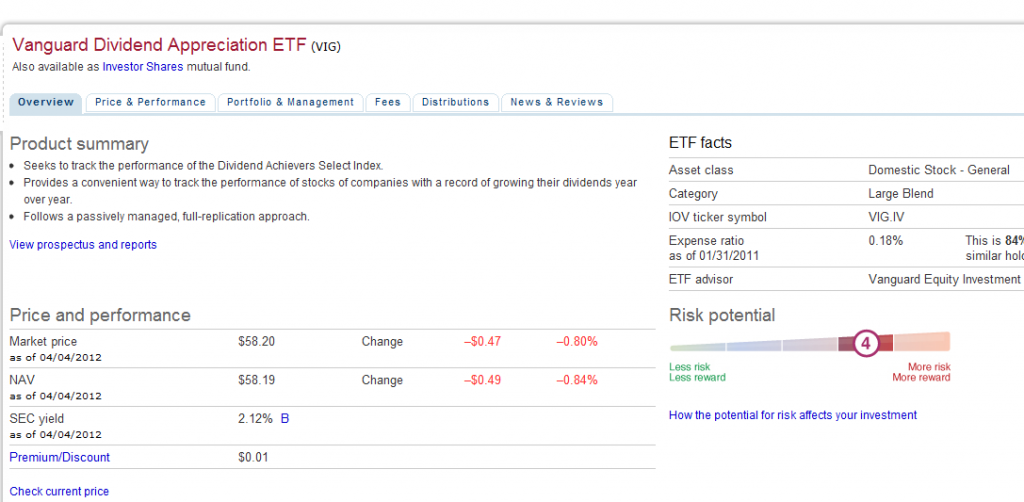Today I wanted to discuss dividend ETF’s. I know, many of you will be surprised to hear me discuss using dividend ETF’s. Why? If you are here, chances are that you want to build you own dividend portfolio. And why wouldn’t you?
Choosing your own stocks has a lot of upside
-You save on management fees (between 0.20-0.60% usually), those do add up over time
-You have flexibility over how dividends are reinvested
-You can decide which stocks to include or not
-You can decide on your general dividend strategy (focus on growth, avoiding certain industries or names, etc)
-You actually know what you hold (often, ETF issuers only disclose their holdings periodically)
-etc
That being said, even the most hardcore dividend investors among us might need to scale back on our individual dividend stocks at some point. Why? There many reasons. There are multple reasons (health issues for members of your family or yourself, job obligations, etc). As great as being a dividend investor is, it does require time. Why? To find, research both potential purchases but also current holdings. I’m not one to believe in buying “stocks for life”. Sure, some great dividend stocks can be great for a very long amount of time but that does not mean you can hold them without checking on how they’re doing.
Lacking time is certainly one reason but so would be reaching a certain age. I know for a fact that we have several readers in their 60s, 70s and even older. That is absolutely incredible. Others are not as fortunate and I do think that over time, as we start to lose some of our ability, it becomes less of a great idea to personally manage our dividend holdings.
What’s Next? Scaling Back
At some point, for whatever reason, you might want to start scaling back on dividend stock investing. That can be a permanent decision or not. No matter why though, starting to buy dividend ETF’s can be a good alternative. You don’t need to witch your entire dividend portfolio to ETF’s but over time, you can start putting a portion of those holdings into dividend ETF’s and gradually move towards building your own ETF portfolio (link to BYETFPF).
How Do Such ETF’s Work?
You can find out more about ETF’s and building an ETF here but the short story is that an ETF is a fund that holds stocks in a similar way to mutual funds. One difference though is that you buy them on the markets which does means paying commissions upfront but the annual costs are generally much lower.
How The ETF’s Manage Dividend Payouts
There are many different alternatives for dividend ETF’s so it’s important to look at the different ETF’s. In general, dividend ETF’s keep track of all payments that they receive and pay back that amount to shareholders on a quarterly basis. Some might choose to pay more than what they are receiving (covered call etf’s [1] for example), or even less. It is even possible for an ETF to aim for a steady dividend payout. I would argue that looking for ETF’s that simply pay back whatever they receive is the best way to go in general.
Steps To Get Started
-The first step is to look at different dividend ETF’s that exist in order to determine which one is closest to your dividend investing philosophy. In Canada, some major ones are
XDV (ishares Dow Jones Canada Select Dividend Index Fund)
CDZ (Claymore S&P/TSX Canadian Dividend ETF)
HAZ (Horizons Global Dividend ETF)
While in the US, there is plenty of choice:
SDY (SPDR S&P Dividend ETF)
VIG (Vanguard Dividend Appreciation ETF)
HDV (iShares High Dividend Equity Fund)
Researching An ETF
In general, in order to find information about an ETF.,, the easiest is to go on the website of that’s ETF issuer. For example, for VIG, if you go to Vanguard’s website, we can find more information about it [2]
On that website there is a summary prospectus that specifies that:
-Total fees in the fund are 0.18%
-The fund buys dividend stocks that are known and are likely to increase their dividends consistently over time
-We can also find the top holdings as of the last date that VIG reported them:
Research Is Still Involved
Of course, you might argue that there is also research to be done when buying the ETF in a similar way to dividend stocks. That would be correct. The big difference is that when that choice is done, you can then rely on the ETF managers to do the research, to add & remove stocks from the ETF, to reinvest dividends, etc. That certainly makes it much easier. You can also find out more about building an ETF portfolio [4], the different steps involved here.
You Might Not Be There Just Yet
If you are reading this blog, chances are that you have little interest in letting a fund make the choices for you. That is more than fine, it’s also my case. But in time, you might end up reconsidering and I would argue that building an ETF portfolio with dividend ETF’s among others is a great alternative when you will reach that point. If you are looking for more info on ETF, I’d suggest you get the free ETF eBook [5] written by My University Money
Any thoughts on this? Do you hold any dividend ETF’s?
Google+ [6]